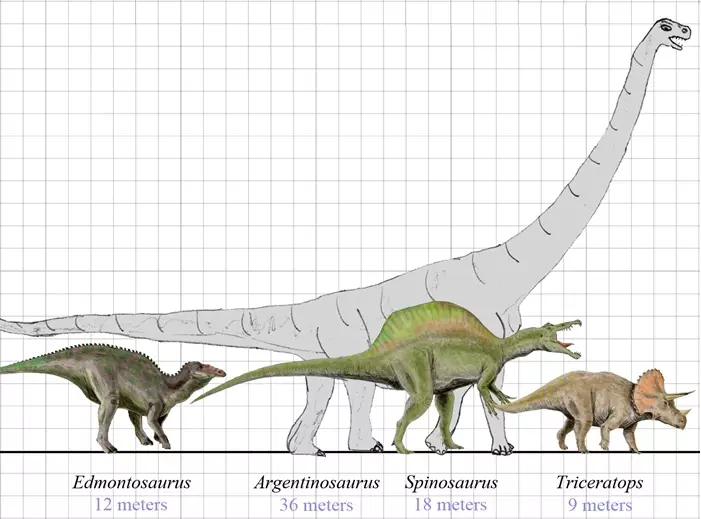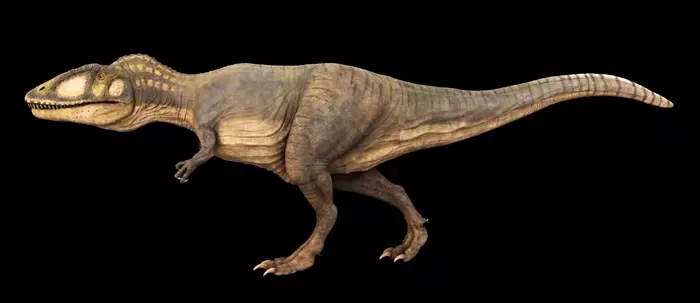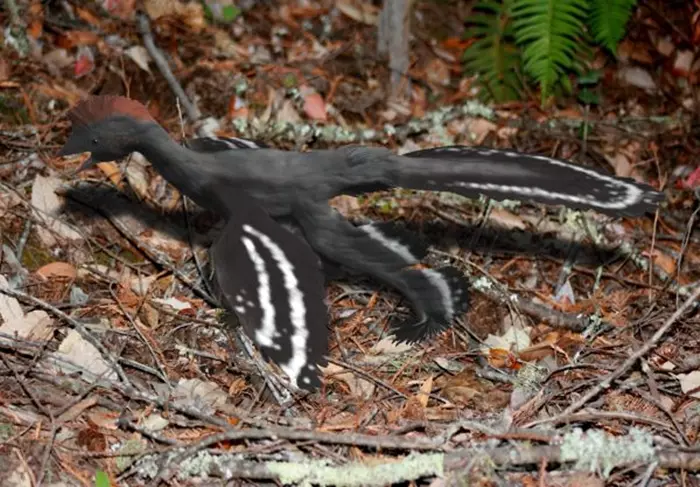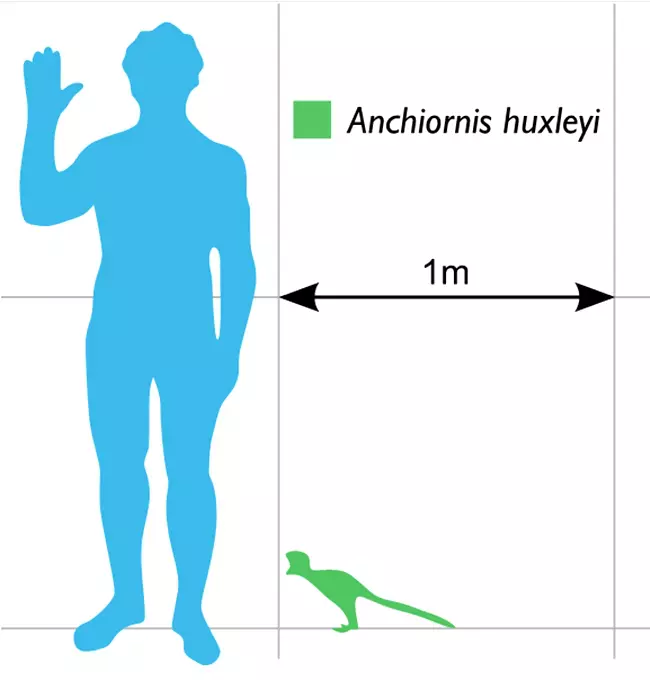Everything about the size of dinosaurs
Which was the biggest and smallest dinosaur in the world?
Size always has been one of the primary aspects of our perception of dinosaurs, both from the view of general public and researchers. They show an extreme variation in size, ranging from the size of a hummingbird to the giant sauropods, like Titanosaurus.
Size of some dinosaurs - Triceratops, Edmontosaurus, Spinosaurus and Argentinosaurus. - Source: flickr.com / Zachi Evenor; modified: Richárd Seres-Nagy; Original title and description: Dinosaurs Size - Comparison of Dinosaurs size (scale diagram), featuring Argentinosaurus (36 meters), Spinosaurus (18 meters), Edmontosaurus (12 meters), Stegosaurus (10 meters) and Triceratops (9 meters). License: Attribution-ShareAlike 2.0 Generic (CC BY-SA 2.0); License link: https://creativecommons.org/licenses/by-sa/2.0/; Link: https://www.flickr.com/photos/zachievenor/14449082951
The bases of the prehistoric animals size comparison
As our knowledge on dinosaurs will probably never be complete, and fossils of new dinosaur species are continuously explored, paleontologists will probably never be certain about the question, that which were the largest and smallest dinosaur species. Nevertheless, only a small proportion of dinosaur species was ever fossilized, and the majority of them probably never will be revealed. Those specimens which are discovered, mostly does not have even a complete skeleton. The reconstruction of a complete skeleton from these fragmentary fossils is based on size and morphology comparison between these fossuils and the bones of better known species.
Estimating their mass is even more complicated, as soft tissues, like muscles and inner organs, did not fossilize. The most advanced method of mass estimation is the use of laser scan skeleton technique. Fossil evidence suggests that the avarage size of dinosaurs varied through the Triassic, Jurassic and Cretaceous periods. Theropoda, which were carnivorous dinosaurs filling most of the predatory niches in land habitats, weighed most often between 100 and 1000 kilograms (just for comparison, recent predatory mammals peak in the range of 10 to 100 kilograms).
Comparison of Dinosaurs size
Amongst all dinosaurs, the longest and heaviest were the sauropoda. Even the smallest members of this group were larger than almost all other dinosaurs in the same habitat. Furthermore, largest members of sauropoda were the biggest and heaviest creatures which ever walked the Earth. Even the giant mammals of the Tertiary were much smaller than these dinosaurs, and only the recent whales could surpass them in weight, however, they are not land animals and live in the oceans. This large size could provide several advantages for sauropods, such as protection from carnivors, reduced energy use, longevity, and more effective digestion. As food spent more time in their digestive system compared to smaller herbivors, they even could utilize food with lower nutritive values in a more effective way than smaller animals could.
In Tanzania, between 1907 and 1912, one of the tallest and at the same time one of the heaviest dinosaur was explored: Giraffatitan brancai. Earlier this species was classified as a member of the genus Brachiosaurus.
Reconstruction of Giraffatitan brancai. - Source: flickr.com / Peter Montgomery; modified: Richárd Seres-Nagy; Original title and description: Giraffatitan - Updated 22 12 2019. Species: G. brancai. Meaning of name: Giraffe giant. Tanzania, Late Jurassic. Classification: Sauropoda, Macronaria. Length: 22m. Lifestyle: browser. Background is a collage of photos of monkey-puzzle trees at Bicton College near Exmouth, South West England. License: Attribution-NonCommercial-ShareAlike 2.0 Generic (CC BY-NC-SA 2.0) ; License link: https://creativecommons.org/licenses/by-nc-sa/2.0/; Link: https://www.flickr.com/photos/paleopeter/8480743836
A skeleton, mixed from bones of several individuals, is exhibited at the museum für Naturkunde Berlin. This "specimen" is 13.27 meters tall and 22.5 meters long, and it was estimated to weight between 30 and 60 tons. However, the longest dinosaur, or at least one of them, was the Diplodocus with 27 meters, discovered in North America. A complete skeleton of this dinosaur is exhibited in Pittsburgh's Carnegie Natural History Museum.
However, it is important to mention, that there existed even larger dinosaurs, but these are known only from fragmentary fossils - most of these were discovered after 1970. One of them, Argentinosaurus huinculensis, was probably the largest dinosaur, and its lenth was estimated to 36 meters. Many of the longest sauropods possessed a long, whip-like tail, e.g. the 27-30 meters long Diplodocus hallorum, and the 45 meters long Barosaurus. An other recently discovered dinosaur, Patagotitan mayorum, was estimated to have a 30-40 meters length, and 50-77 tonnes weight.
For a long time, Tyrannosaurus was the largest, the most terryfying, and publicly best known theropod dinosaur. However, subsequently other huge carnivor dinosaurs have been explored, such as Giganotosaurus, Spinosaurus, or Carcharodontosaurus.
Reconstruction of Carcharodontosaurus. - Source: By Julian Johnson, CC BY 3.0, https://commons.wikimedia.org/w/index.php?curid=49229825
Though these species surpassed the T-rex in size, probably Tyrannosaurus were the most massive land predator of all times. It is not surely known, that what could be the reason why these dinosaurs grew so large and bulky compared to other land predators in the history of Earth. Between the extant descendants of dinosaurs, the largest one is the common ostrich, with its 2.74 metres maximum height, and weights 145 kilogramms.
In the other hand, the smallest non-avialan predatory dinosaur was probably the Anchiornis huxleyi, which weighted 110 grams and was 34 centimeters long. Nevertheless, there is some uncertainity about the non-avialan being of this species.
Reconstruction of Anchiornis huxleyi. - Source: By Nobu Tamura (http://spinops.blogspot.com) - Own work, CC BY 3.0, https://commons.wikimedia.org/w/index.php?curid=19461664; Anchiornis huxleyi, a maniraptoran from the Late Jurassic of China.
Size of the dinosaur Anchiornis huxleyi compared with a human. Size based on largest referred specimen, LPM-B00169. - Source: By Anchiornis_scale_mmartyniuk.png: Matt Martyniukderivative work: Serenthia - Anchiornis_scale_mmartyniuk.png, CC BY 3.0, https://commons.wikimedia.org/w/index.php?curid=13223026
The smallest theropod, which was surely not avialan, was the Parvicursos remotus, with 185 grams and 50 centimeters. Among the present-day birds, the smallest one is Mellisuga helenae (bee hummingbird), with 1.9 grams and 5.5 centimeters. Theropods were the only dinosaur group, which get continuously smaller, eventually evolving into present-day birds. Compared to other dinosau group, their skeletons changed considerably faster on evolutionary time scale than those of the other groups.
Regarding the mass, length and height of sauropods, due to the mostly fragmentary state of their fossils, they are difficult to estimate. The fossil of these dinosaurs often are preserved without their tails, which makes tricky to find out their exact length. Their mass is usually based on the cube of their length, which becomes also uncertain in the above mentioned case. For example, Maraapulisaurus fragillimus was described by a single fossil bone, and was estimated to be the largest dinosaur ever, reaching the length of 60 meters. However, subsequent and more modern estimations suggested that its size was probably considerably smaller than it was first presumed - this case shows well the uncertainity about dinosaur sizes in species with fragmentary fossil material. Due to the different methods in estimation, sometimes results are conflicting, and these show a great variation, which sometimes leads to disagreement among specialist. However, one thing is sure - dinosaurs were the largest land animals which ever walked the Earth.
RSN
August 31, 2021




